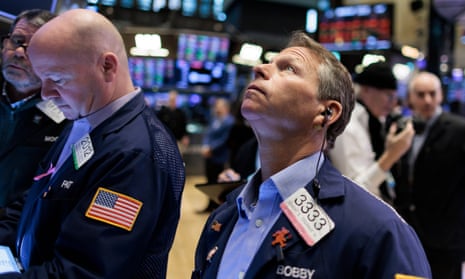The global banking system is reeling from a series of shocks over the past week, prompted by the collapse of California’s Silicon Valley Bank. That has stoked fears that this is the start of another banking crisis, posing big questions for central banks as they try to fight inflation while ensuring financial stability.
What is happening in financial markets?
Severe stresses in the global financial system have become apparent in the past week. In the US, Silicon Valley Bank’s (SVB) collapse last Friday was the first domino to fall, followed by New York’s Signature Bank on Sunday. Wall Street’s biggest lenders clubbing together to rescue First Republic Bank after its shares crashed, pumping $30bn (£25bn) into it. In Europe, the Swiss National Bank was forced to offer a £44.5bn lifeline to Credit Suisse. Although there were specific problems at SVB and Credit Suisse, there is evidence of wider distress.
Every week, the Federal Reserve, the US’s central bank, provides details of the emergency help it has provided to American banks over the past seven days. In the last week, this rose from $15bn to $318bn – well in excess of the $130bn at the start of the Covid-19 pandemic and not far short of the $437bn at the height of the banking crisis after the bankruptcy of Lehman Brothers in 2008.
So are we in for a repeat of the global financial crisis of 2008?
It is too early to say at this stage, but there are reasons to be hopeful that a repeat can be avoided. First, banks are in better financial shape than they were in 2008, when many were operating with only small amounts of capital to cover the losses resulting from the meltdown in the US sub-prime mortgage market.
Second, in 2008 the entire global financial system froze up because nobody knew how big the losses were and which banks were most heavily exposed. As yet, there is no sign of that, and banks are forced to report regularly on the quality of their asset portfolios, also undergoing severe stress tests.
Finally, central banks such as the Federal Reserve and the European Central Bank have set up lines of credit designed to provide help to banks with cashflow problems. All that said, the global financial crisis, or GFC, started on a small scale and quickly escalated. What is more, it is clear banks – and other financial institutions – are nursing serious losses. One lesson from 2008 is that confidence can evaporate fast.
Why are the banks making losses?
Central banks responded to the GFC in two ways: they slashed interest rates and pumped money into the banking system through the process known as quantitative easing (QE). In effect, central banks bought bonds – mostly issued by governments – and exchanged them for cash that found its way into the economy. A further round of interest rate cuts and QE occurred at the start of the Covid pandemic.
Central banks have reversed course due to rising inflation. They have raised interest rates and started to sell bonds. Bond prices rose as a result of the QE programmes but have fallen sharply over the past year as QE has been unwound. The aggressive action by central banks has left commercial banks nursing big and unexpected losses. SVB had invested heavily in long-dated US government bonds, but as rates rose sharply the value of its bond prices fell. When customers started demanding their cash back, that forced SVB to sell bonds at a heavy loss, blowing a hole in its balance sheet.
after newsletter promotion
What happens next?
Central banks are in a bind because there is a tension between their two main functions: to keep inflation low and maintain financial stability. Raising interest rates and reversing QE are designed to slow down growth and so bring inflation down, but even though the ECB went ahead with a planned interest rate rise on Thursday the cost of doing so is that some banks are struggling to cope with the tougher conditions.
Financial markets now assume interest rates will peak sooner and at a lower level than they did before the crisis at SVB blew up, and will be waiting to see how the Fed and the Bank of England respond with interest rate decisions next week. The case for not raising borrowing costs further is that only a fraction of the effect of the higher interest rates of the past year has so far been felt, and that commercial banks are already responding to the problems at SVB and elsewhere by reducing their lending. Risks of recession have markedly increased in the past week.









